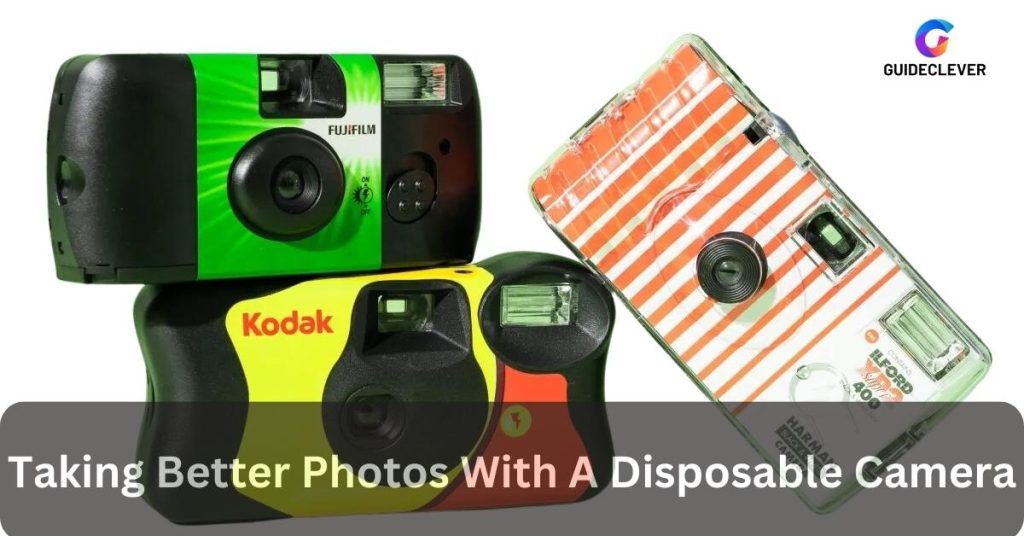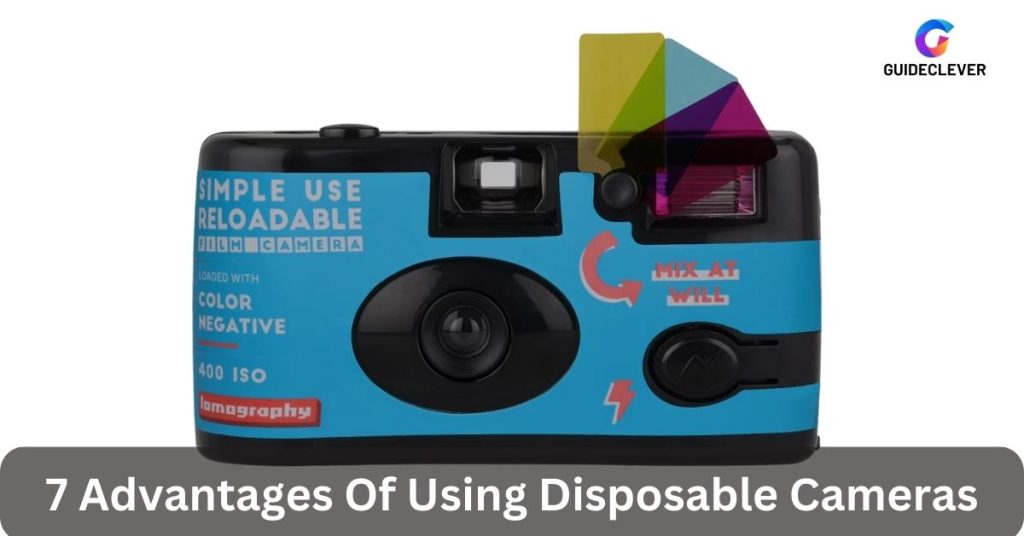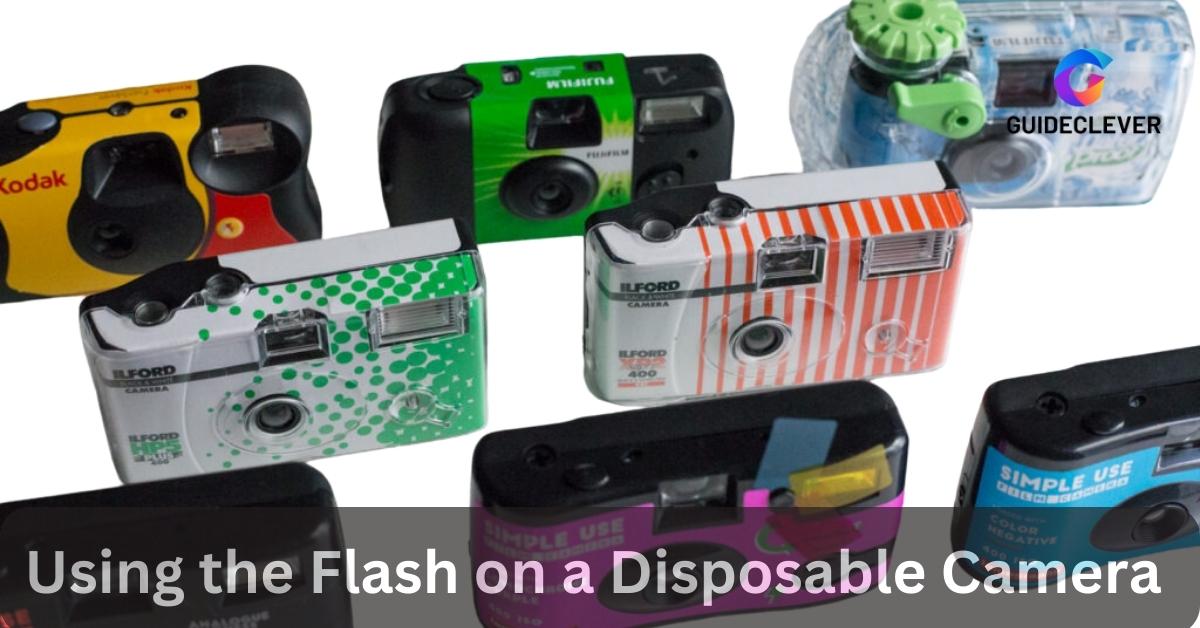People often use disposable cameras to take pictures of important events without buying expensive tools. Even though they are easy to use, people often ask, “Do you need to use the flash on a disposable camera?”
The following article addresses the subject, giving insights and tips. As well we will provide answers to commonly asked questions. Knowing how the flash on a disposable camera works is essential, whether you take pictures occasionally or permanently. It can make a big difference in the quality of your images.
Follow our instructions, and stay tuned to learn more.
Contents
- 1 Need To Use The Flash On A Disposable Camera (Know 11 Things)
- 2 10 Tips For Using The Flash On A Disposable Camera
- 3 Taking Better Photos With A Disposable Camera (10 Basic Things)
- 4 7 Advantages Of Using Disposable Cameras
- 5 Frequently Asked Questions (FAQs): The Flash In Disposable Cameras
- 5.1 Can I Turn Off The Flash On A Disposable Camera?
- 5.2 Will Using The Flash Drain The Battery Quickly?
- 5.3 Can I Use The Flash Outdoors During The Day?
- 5.4 Why Are Some Photos Washed Out When Using The Flash?
- 5.5 What Should I Do If The Flash Doesn’t Work?
- 5.6 Can I Use The Flash Underwater With Waterproof Disposable Cameras?
- 6 Final Suggestions
Need To Use The Flash On A Disposable Camera (Know 11 Things)

Using the flash on a disposable camera depends on several things, such as how bright and far away the subject is and waterproof.
Let’s speak about the several scenarios in which you could desire using Flash
Low-Light Situations:
You need to use the flash when there isn’t a lot of light, like indoors or at night. The flash gives off extra light to highlight the subject and ensure the picture isn’t fuzzy or dark.
Backlit Scenes:
The photograph can turn dark when your subject is in front of a bright light source, like the sun. Using the flash can help even out the brightness and light up what you’re taking a picture of.
Indoor Events:
Indoor events like birthday parties, family gatherings, and wedding receptions are often challenging for disposable cameras to capture well-lit pictures. The flash makes up for the lack of natural light. In this way, the images appear better.
Close-Up Shots:
For close-up shots, the flash can smooth out strong shadows and adequately light the subject. It makes for better photos.
Evening Or Nighttime:
There is little light when taking pictures at night or in the evening, so you need the flash to get good photos.
Subjects In Shade:
If your subject is in the shade, the camera may need to give them more light. Using the flash helps fill the darkness and draw attention to your problems.
Indoor Landscapes:
When you take pictures of indoor scenery or buildings, the flash can give your photos more depth and clarity.
But there are times when using the flash is not necessary or even insufficient for the picture quality:
Sufficient Natural Light:
When there is sufficient sunlight, the flash can cause intense lighting and shadows that don’t look right. In these situations, it’s best to spend less time.
Long-Distance Subjects:
The range of the flash on disposable cameras is close. If your subject is positioned too far away, the shot won’t work, so it’s better to use the light already there.
Reflective Surfaces:
If you’re taking a picture of a mirror or glass, don’t use the flash because it can cause an unpleasant glare.
Night Scenes:
Turning off the flash can create a more moody appearance in some nighttime scenes where it’s essential to show how dim the light is.
10 Tips For Using The Flash On A Disposable Camera

Here are some tips for getting the most out or developed of the flash on your disposable camera:
Check The Range:
The ideal flash range for most disposable cameras is between 4 and 10 feet. Make sure the subject matter is in this area for the best results.
Avoid Obstructions:
Make sure that neither your finger nor anything else blocks the flash. When taking pictures, keep your hands away from the camera.
Bounce The Light:
Use what’s around you to bounce the light from the flash. Point the moment at a nearby wall or ceiling to soften the morning and keep shadows from being too strong.
Experiment With Distance:
Change your subject’s distance from the camera to get different lighting effects. The light may be brighter when you get closer, but if you move back just a little, the flash will be less noticeable.
Use Flash Diffusers:
You could make your flash diffusers out of white plastic cups or paper to lessen the strength of the flash.
Flash: Fill-In
Use the flash as a fill light to even out the brightness when the sun is out, and the shadows are strong.
Learn from Test Shots:
Try taking a few test shots before you try to capture critical moments. This will help you understand how the flash changes your photographs in different situations.
Beware Of Red-Eye:
Portraits taken with disposable cameras can have red eyes because of the flash. Ask your subjects not to look right into the lens; if you have the option, use the red-eye reduction tool.
Keep Spare Batteries:
Carry extra batteries to ensure the flash has enough power for the event.
Follow Disposable Camera Instructions:
Each disposable camera might have directions for how to use the flash. Read the instructions or the box to get the best results.
Taking Better Photos With A Disposable Camera (10 Basic Things)

Using a disposable camera can be fun and bring back memories, but if you want to get the best works or results, consider the following:
Keep Steady:
Most disposable cameras are single-use gadgets that don’t have picture stabilization. Hold the camera still while you press the snap button to keep your shots from being blurry.
Compose Carefully:
Take a second to set up your shot before you take it. Pay attention to the framing and make sure the main subject is well-centered.
Be Mindful Of Lighting:
Lighting is a crucial part of photos. When shooting outside, shoot during the sunny hours, early in the morning, or late in the afternoon.
Explore Different Angles:
Try different angles and points of view to make your shots more creative and unique.
Think About The Past:
Keep an eye on the background to make sure there aren’t any distractions that take away from the main subject.
Use The Rule Of Thirds:
Imagine your frame as a 3×3 grid, and put your subject on one of the points where the grids meet to make a balanced composition that looks good.
Capture Candid Moments:
Some of the best pictures are taken when no one is looking. Take photos of actual, emotional times when they happen naturally.
Embrace Imperfections:
The flaws of disposable cameras add to their charm. Accept that each shot will have its grain, light leaks, and other unique traits.
Limit Reflections From Flash:
When taking pictures through glass, like in museums or aquariums, tilt the camera slightly to the side to reduce flash effects.
Label Your Cameras:
If you use multiple disposable cameras for different events, name them to remember where and when you took each roll.
7 Advantages Of Using Disposable Cameras

There are a few good reasons to use a disposable camera, which makes them an excellent choice in some situations:
Affordability:
Disposable cameras are cheap, so kids and people just starting to shoot can use them.
Simple To Use:
Since there are no complicated settings or setups, disposable cameras are easy to use by people of all ages.
Minimal Maintenance:
When you’re done with a roll, you can drop it off at the camera to have it developed. As well as printed without doing other things like moving files or charging batteries.
Experience Without Plugs:
Using a disposable camera, you can forget about the digital world and enjoy the moment.
Bringing Back The Classic Look:
The nostalgic feel of disposable cameras and the way they look like they are from the past give your pictures a unique touch.
Ideal For Events:
Disposable cameras are great for weddings, parties, and other events—where you want to record spontaneous moments without risking breaking expensive equipment.
No Data Storage:
Disposable cameras don’t need any further equipment, such as a memory card or online storage, to function. It makes it easier to handle your photos.
Frequently Asked Questions (FAQs): The Flash In Disposable Cameras
Can I Turn Off The Flash On A Disposable Camera?
You can turn off the flash on most disposable cameras. Look for a switch or button that says “Flash” and turn it to “Off” if there are times when you don’t want to use the flash.
Will Using The Flash Drain The Battery Quickly?
Using the flash does use up battery power, but current disposable cameras are made to last through a good number of flash shots. But it’s wise to take extra batteries, especially during critical events.
Can I Use The Flash Outdoors During The Day?
It’s rare to use the flash outside during the day, but a fill flash can help balance the light if the subject is shaded or there are a lot of shadows.
Why Are Some Photos Washed Out When Using The Flash?
Photos can look washed out if the flash is too close to the subject or if there needs to be more light in the background. Try different distances from the moment and use it as a fill flash when necessary.
What Should I Do If The Flash Doesn’t Work?
If the flash doesn’t work, ensure the camera has a working battery and the second is on. If the problem continues, ask the camera maker for help.
Can I Use The Flash Underwater With Waterproof Disposable Cameras?
You can’t use the flash while swimming with a waterproof disposable camera. The moment won’t work underwater because water has traits that bend light.
Final Suggestions
Ultimately, using the flash on a (Kodak) disposable camera depends on how much light there is and what you want to take pictures of. Using the moment can make a big difference in the quality of your shots when there isn’t enough light or when the scene is backlit.
On the other hand, it’s best to use something other than a flash in well-lit places to keep the natural lighting and avoid washed-out photos.
Try different settings, angles, and ways to use your disposable camera to get the most out of it. Embrace what makes disposable cameras unique, like their flaws and old look. Disposable cameras have a place in the hearts of photographers worldwide. They are mostly used to capture special moments at an event or enjoy the ease of film photography.



1 thought on “Using the Flash on a Disposable Camera [Basic 7 Benefits]”